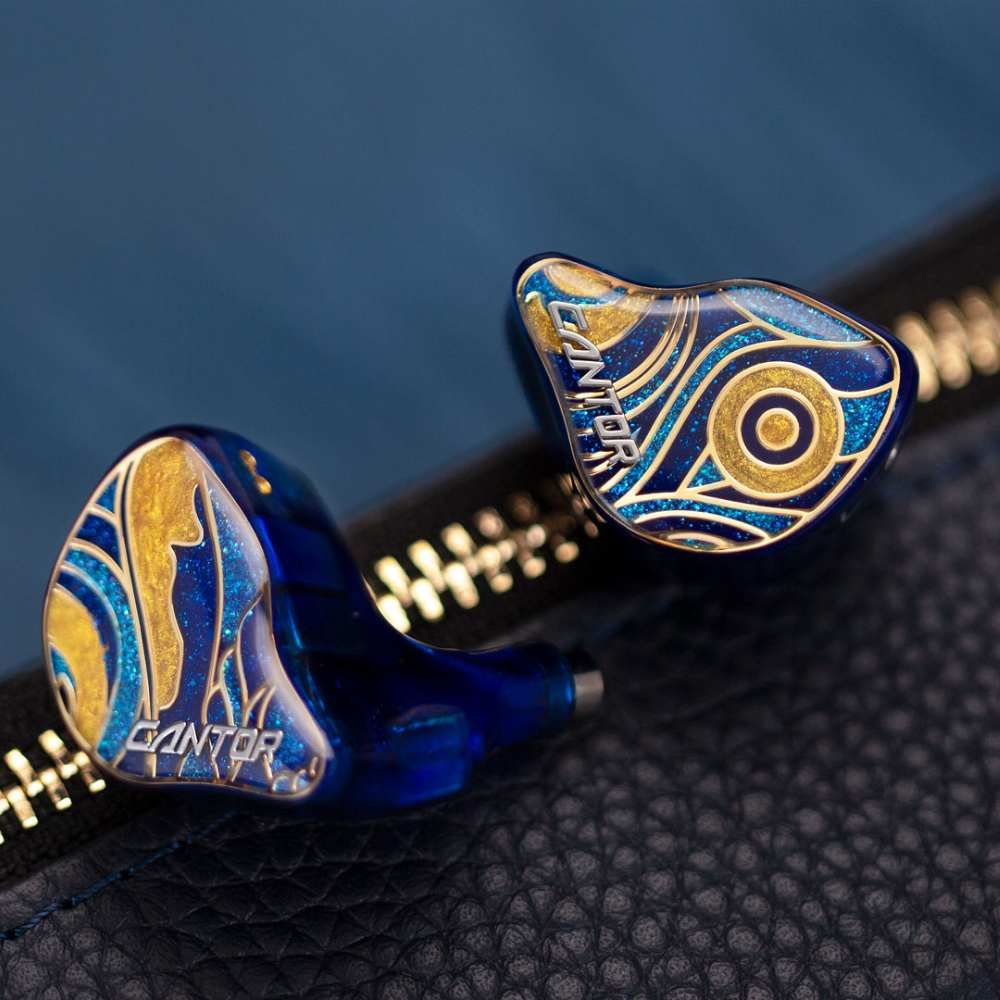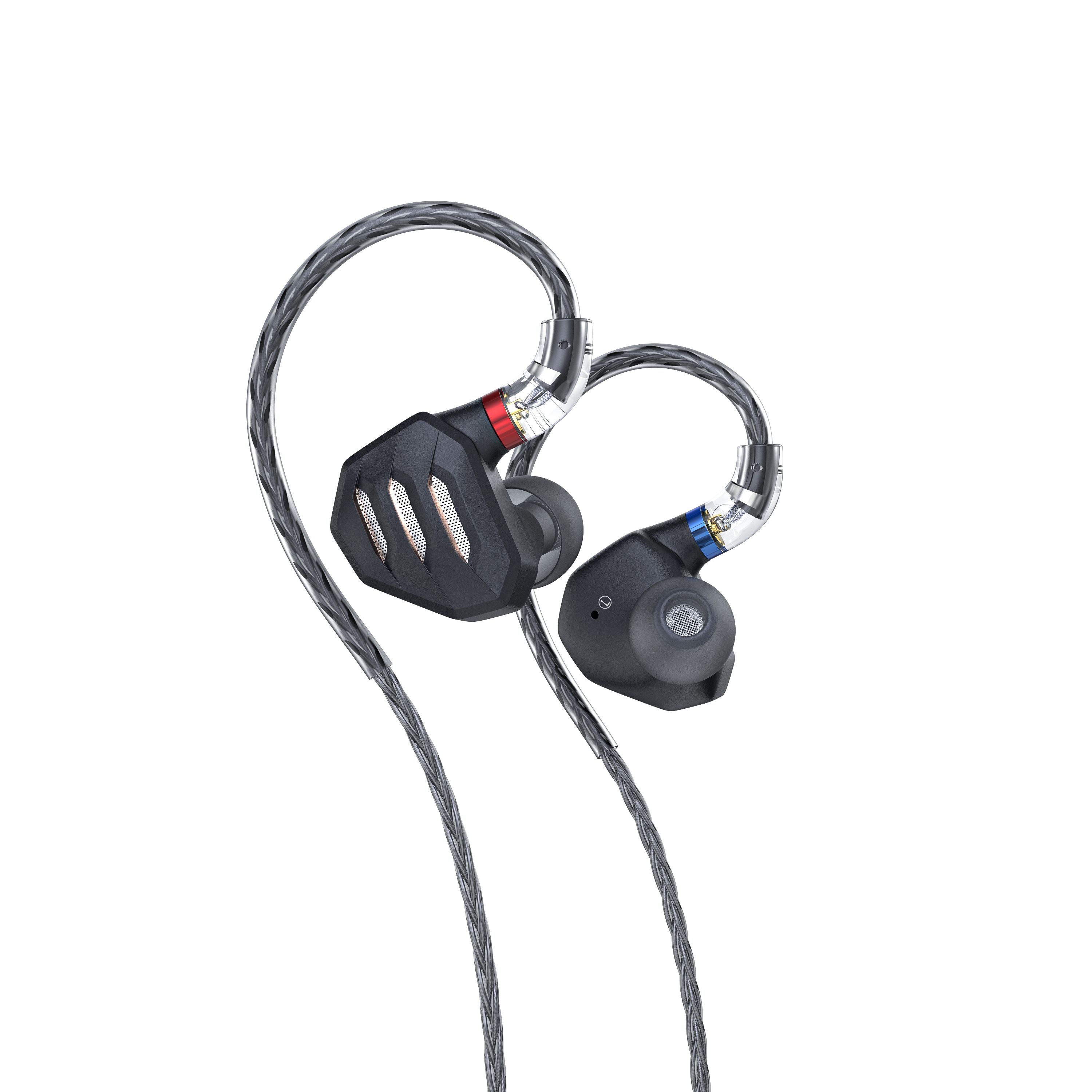Cantorvs.FH7
Sound & Specs Comparison
Information
Both IEMs are widely regarded in the audiophile community. See how they differ in terms of sub-bass response, upper mids, clarity, and overall tonality. Spider charts and rating breakdowns included.
Objective Comparison
Facts, details, stuff.
| General Info | Cantor | FH7 |
|---|---|---|
| Brand | AFUL | FiiO |
| Country | Taiwan | China |
| IEM Description | The AFUL Cantor combines technical precision with musicality in a hybrid design. Featuring a dynamic driver for powerful bass and multiple balanced armatures for clean mids and sparkly highs, it delivers a spacious soundstage with excellent separation. Tuning leans slightly toward a balanced-bright signature, making it a solid choice for detail lovers who still want some low-end punch. | The FiiO FH7 is a flagship hybrid IEM that pairs a 13.6 mm Dynamic Driver with four Balanced‑Armature drivers in a 4‑way crossover. Housed in lightweight aluminum‑magnesium alloy shells and paired with a detachable silver‑plated OFC cable, it offers secure comfort and easy cable swaps. Sonically, it delivers punchy, textured bass, warm, natural mids and a smooth yet detailed treble extension. The kit includes multiple silicone and memory‑foam tips plus a premium carry case for on‑the‑go listening. |
| Price Level | 500 – 1.000 | 100 – 500 |
| Housing & Driver | ||
|---|---|---|
| Driver Config | Multi-BA | Hybrid |
| Driver Types | Balanced Armature | Dynamic Driver + Balanced Armature |
| Shell Material | – | aluminum‑magnesium alloy |
| Cable | 4Braid 5N OFC Cable | silver‑plated OFC cable |
| Technical | ||
|---|---|---|
| Freq Range | – | 5 Hz – 40 kHz |
| Impedance (Ω) | 20 | 16 |
| Sensitivity (dB) | 106 | 111 |
| Crossover | RLC Network Electronic Crossover | 4‑way crossover |
| Platform Info | ||
|---|---|---|
| Comments | 2 | 2 |
| Visit Count | 150 | 124 |
| External Reviews | 1 | 1 |
Meta Ratings
// Nothing to compare yet.
Sound Characteristics
Low-frequency extension on Cantor feels a more natural and authoritative, while FH7 lacks some reach (8.5 vs 6). It offers a stronger and more impactful bass response, adding weight and presence where FH7 feels less assertive (9 vs 7). Listeners may find the low-end impact on FH7 b more engaging during high-dynamic passages (9 vs 8.5). It renders lower mids s more naturally, giving male vocals and instruments a fuller tone than Cantor (10 vs 8.5). The treble on Cantor is a more nuanced and refined, especially when it comes to cymbals and ambient elements (8 vs 7). FH7 captures ambient cues and reverbs a more precisely through its upper treble, enhancing spatial perception over Cantor (10 vs 7.5). The stereo field on It feels a wider and more holographic, whereas Cantor sounds more intimate (9 vs 8). Cantor organizes musical elements a better across depth, enhancing spatial realism over FH7 (8.3 vs 7.5). FH7 keeps competing frequencies under control e more effectively, reducing sonic congestion compared to Cantor (9 vs 8). Cantor adds a more body and density to musical notes, enriching the overall texture compared to FH7 (7.5 vs 7). It delivers overwhelmingly stronger slam and physicality, making drums and transients hit harder than FH7 (8.5 vs 3). It controls harsh sibilant peaks e more effectively, making vocals smoother than on FH7 (8.5 vs 7.5). The tone quality of FH7 feels s more organic and true-to-source than the slightly artificial flavor of Cantor (9 vs 7.5). It renders texture a more precisely, making instrument surfaces and vocal grain more palpable than Cantor (9 vs 8).
| Cantor | FH7 | |
|---|---|---|
| Sub Bass | 8.5 | 6.0 |
| Bass | 9.0 | 7.0 |
| Bass Feel | 8.5 | 9.0 |
| Lower Mids | 8.5 | 10.0 |
| Upper Mids | 8.0 | 8.0 |
| Lower Treble | 8.0 | 7.0 |
| Upper Treble | 7.5 | 10.0 |
| Sound Stage Width | 8.0 | 9.0 |
| Detail | 8.8 | 9.0 |
| Layering | 8.3 | 7.5 |
| Masking | 8.0 | 9.0 |
| Note Weight | 7.5 | 7.0 |
| Slam | 8.5 | 3.0 |
| Sibilance | 8.5 | 7.5 |
| Timbre Color | 7.5 | 9.0 |
| Tonality | 8.8 | 9.0 |
| Texture | 8.0 | 9.0 |
Tonal Signature
// Nothing to compare yet.

